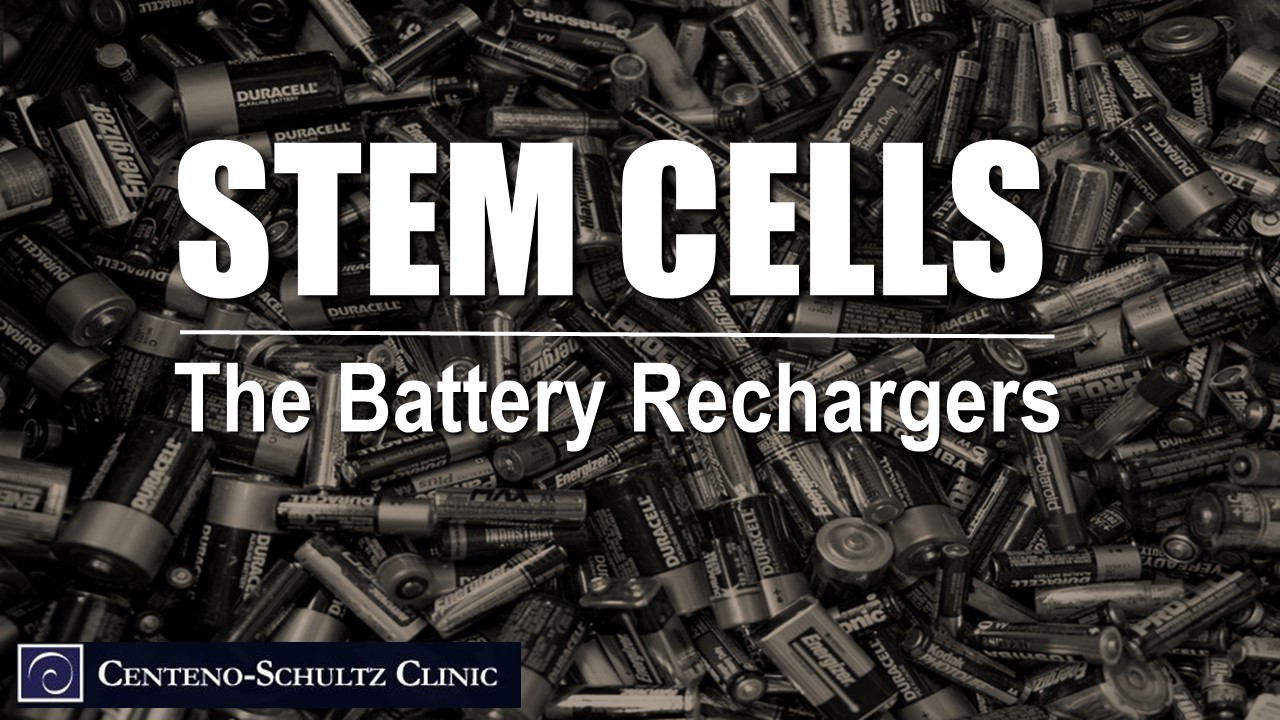Most people really don’t understand how stem cells work or what it is they do exactly. So over the next couple of weeks, we’re going to dedicate some time to just talking stem cells because there’s so much to cover. Each topic also has an accompanying video, so be sure to watch. In “Let’s Talk Stem Cells Part 1,” let’s talk about how stem cells work by helping other cells recharge their damaged batteries.
How Stem Cells Work
Stem Cells Recharge the Mitochondria
Much like a rechargeable battery can fire up your smartphone, stem cells can literally connect up with weak, damaged, and even dying cells and rescue them by giving them a power boost. How? Mesenchymal stem cells (MSCs) can actually transfer their good mitochondria to weak or damaged cells.
Let’s examine this deeper by taking a brief journey back to high-school science class. First, remember that cells make up tissues, tissues make up organs, organs make up body systems, and so on. But let’s zoom in closer, all the way inside the cell. The mitochondrion (singular) is one of many cell structures located within the cytoplasm (the protein-rich fluid) in each cell. Each cell can have many mitochondria (plural). The mitochondria convert nutrients from our food into chemical energy, and as such, they are the energy storehouses, or the battery packs, of the cell.
One of the many functions of a stem cell is to repair other cells. It does this by locating a cell in which the batteries (mitochondria) have weakened, or the cell has become damaged, latching on to it, and transferring its own fully charged mitochondria into the bad cell. This is how our natural stem cells stimulate healing, for example following an injury. If you are a visual learner, Dr. Centeno’s brief video below should give you a clear picture of how this process works:
Sorting the Good Mitochondria from the Bad
As if stem cells recharging the batteries of our other cells isn’t fascinating enough, we can expand on this even more. Another way the human body heals and rejuvenates itself, according to one study, is by sorting the good mitochondria (the power supply) in our stem cells from the bad.
When stem cells divide and grow, the body is quite selective; instead of sorting the cells’ strong and weak batteries equally into the new cells, the body sorts the stronger batteries into one cell and the weaker batteries into another cell. It might seem that the body isn’t playing fair here, but one of the amazing ways stem cells work is it seems they know that a smaller population of strong, vibrant cells are much more effective than an abundance of mediocre stem cells.
Healthy Stem Cells Are Key
Besides injury or disease, for example, the normal process of aging can also result in more weak, damaged, or dying cells. The end goal here is that the more strong cells the body makes (as opposed to the mediocre or weak cells mentioned above), the quicker we heal from injury and disease, and the slower the body ages, so the healthier and stronger our stem cells the better.
How can you improve your stem cell health, especially if you’re considering a stem cell treatment? Read our recommendations on 8 ways to improve the health of your stem cells. In addition, CoQ10 has been shown to benefit mitochondria by helping generate the cell fuel that runs the batteries (the mitochondria). Check back in Monday as we look further into how stem cells work in “Let’s Talk Stem Cells Part 2.”
